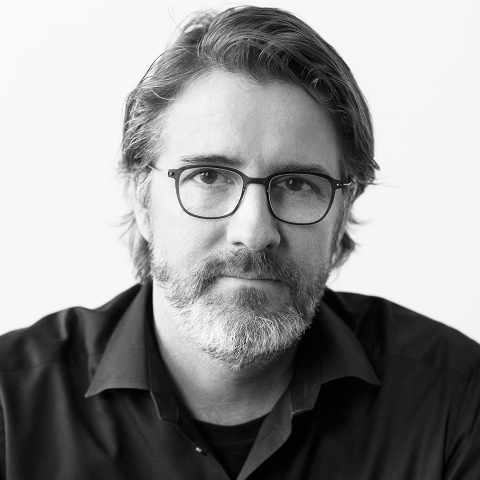
Olafur Eliasson is an Icelandic Danish artist born in 1967. From 1989 to 1995, he studied at the Royal Danish Academy of Fine Arts. In 1995, he moved to Berlin and founded Studio Olafur Eliasson, which is now comprised of a very large staff of visionaries, artists, researchers, and architects. Since 1997, he has carved a name for himself with his plethora of sculptures, architectural work, installations, and exhibitions that appeared around the globe. His focus ranges from abstract forms to environmentally messaged installations, and exhibitions that redefine what a sculpture could be. His exhibition, The Weather Project, an enormous artificial sun shrouded by mist, in the Turbine Hall of Tate Modern, London, which was seen by more than two million people. He’s worked with architecture to create buildings such as Fjordenhus, or iceberg house, a building that is entirely on water, and several artificial waterfalls. He is especially in tune with spatiality with his works, experimenting with how one can use, define, and reshape space to create a new experience with it. According to Eliasson;
“We need to challenge the idea of externalized space, the idea that there is a space ‘over there’, like a container, that we can enter physically if we want to, but to which we have no access if we decide to stay here….I draw inspirations from the idea that space is relative, which does not necessarily overlap with relational space in that sense. The idea that space is to a greater extent negotiable, and the performance of negotiating obviously twists and turns and bends all the other dimensions, just like time does.” – Eliasson, Spatial Experiments.
From his works such as Riverbed, Life, and especially Ice Watch, one can see Eliasson’s strength comes from letting the viewers of his art quite literally interact with the sculptures, being able to touch, experiment with, and even walk on the installations to truly connect with them, bringing an interpersonal inflection on his messages he tries to convey with his environmental work, that we must be able to truly be with nature to see its true form. Humans, over the course of our expansive development, have changed the environment around us to fit our needs, tossing away whatever was not useful to us immediately, with deforestation, pollution, the slaughtering of animals, and finally the release of greenhouse gases. That’s not all, with our political ecology, we have also limited humanity’s connection with nature in its true state, redefining our image of nature itself, and the word nature, as our image of “natural” has been warped into a different state. It extends further to animals, seeing wild animals as a commodity to view and marvel at, as if they were an incredible thing we’d never be able to naturally see, with the existence of zoos. The ecosystem, which was initially a crucial part of the planet, has now become something we own and fight over, reaping its benefits, seeing it as an item rather than a range of natural elements.

We, as humans, need to reconnect with nature and repair our context of how we see it, because the further these definitions change, the quicker these things will disappear from our lives, as we take them for granted when we should really respect it as a part of this planet with us. While seeing a painting of a forest, or thinking about a message from a political piece of art can leave something with us, they never truly last as we cannot truly connect with nature as it is today. Olafur Eliasson has been chosen for this message and exhibition, as his works transcend simple artwork as something people can feel and truly experience. With Riverbed, viewers were allowed to walk on and explore the rocky riverbed, with Life, patrons were able to see a working artificial ecosystem firsthand, and Ice Watch allowed people to truly respect the ice caps and really think about global warming by being able to feel real ice, something only a plane ticket could show them.


